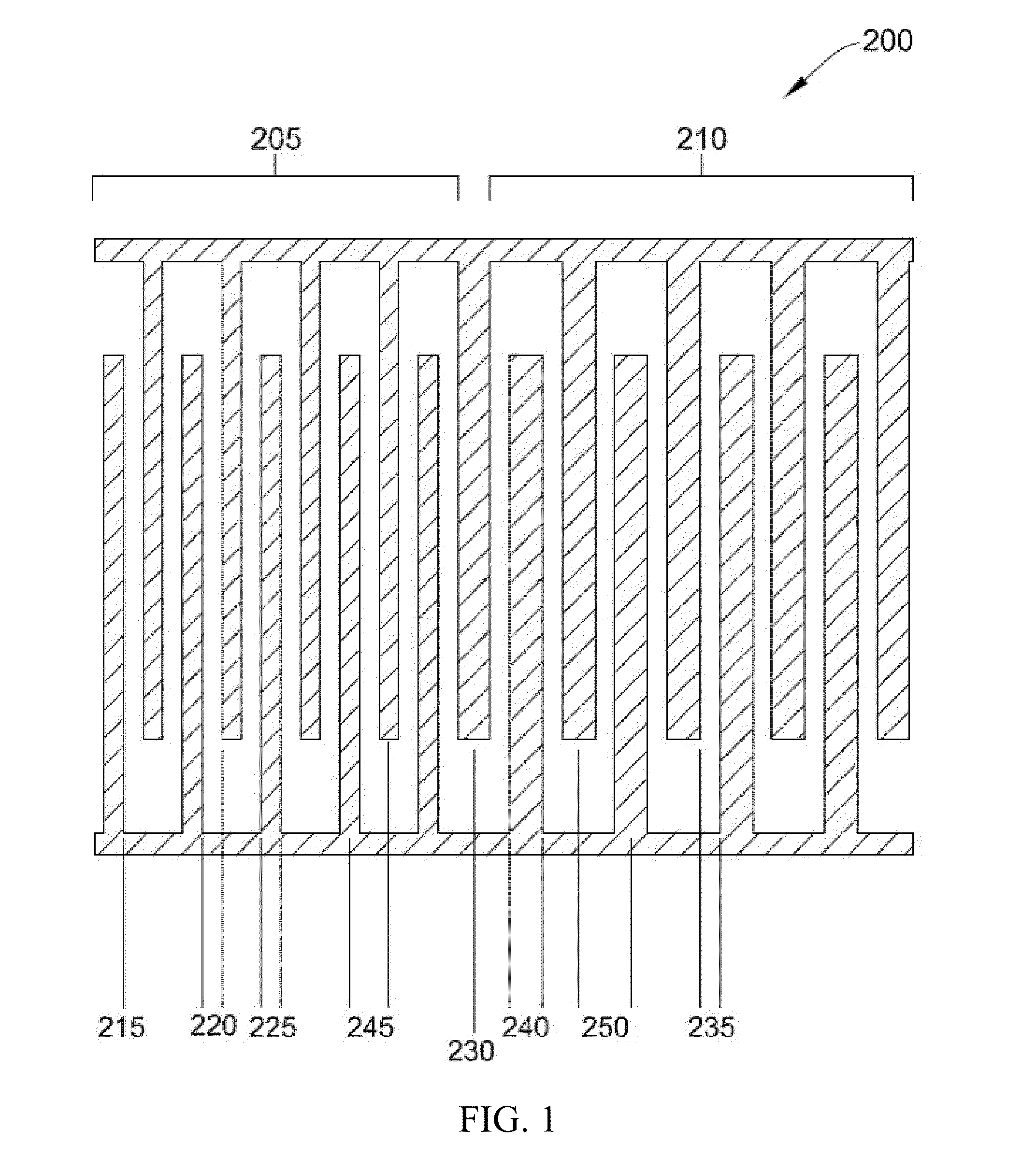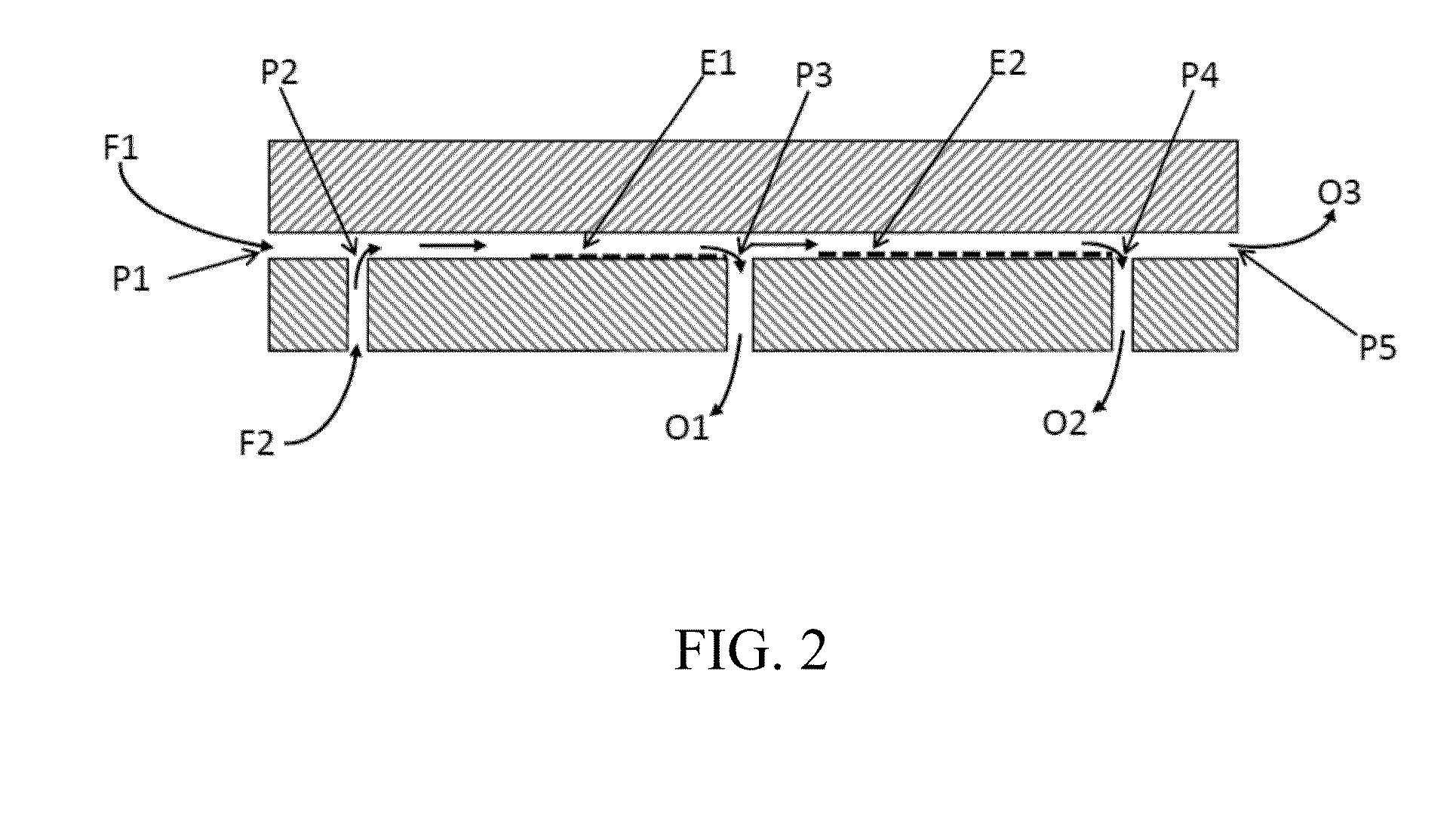Method and apparatus for isolation, capture and molecular analysis of target particles
a target particle and molecular analysis technology, applied in the direction of fluid pressure measurement, liquid/fluent solid measurement, peptides, etc., can solve the problems of limited access, less effective treatment for patients, and outdated molecular information about tumors
- Summary
- Abstract
- Description
- Claims
- Application Information
AI Technical Summary
Benefits of technology
Problems solved by technology
Method used
Image
Examples
example 1
[0102]In this Example, the recovery of SKOV3 ovarian cancer cells was compared between electrode 200 (illustrated in FIG. 2) and electrode 100 (illustrated in FIG. 1) using different elution buffer flow rates.
[0103]Specifically, PBMC were spiked with SKOV3 ovarian cancer cells. The data collected utilized a prior art electrode with an inter-electrode gap 110 of 50 microns and a conductive trace width 115 of 50 microns. In this particular Example, electrode 200 had two zones 205, 210 with a first inter-electrode gap 220 of 30 microns, a first conductive trace width 225 of 30 microns, a second inter-electrode gap 235 of 30 microns and a second conductive trace width 240 of 50 microns.
[0104]Table 1 summarizes a comparison between the recovery of SKOV3 cancer cells using electrode 200 compared with electrode 100 using different elution buffer flow rates.
TABLE 1Comparison of percent recovery with electrode configurations.% Recovery% Recoveryof SKOV3of SKOV3ovarian cancerovarian cancerElu...
PUM
| Property | Measurement | Unit |
|---|---|---|
| Electrical conductivity | aaaaa | aaaaa |
| Electrical conductivity | aaaaa | aaaaa |
| Electrical conductivity | aaaaa | aaaaa |
Abstract
Description
Claims
Application Information
 Login to View More
Login to View More - R&D
- Intellectual Property
- Life Sciences
- Materials
- Tech Scout
- Unparalleled Data Quality
- Higher Quality Content
- 60% Fewer Hallucinations
Browse by: Latest US Patents, China's latest patents, Technical Efficacy Thesaurus, Application Domain, Technology Topic, Popular Technical Reports.
© 2025 PatSnap. All rights reserved.Legal|Privacy policy|Modern Slavery Act Transparency Statement|Sitemap|About US| Contact US: help@patsnap.com



